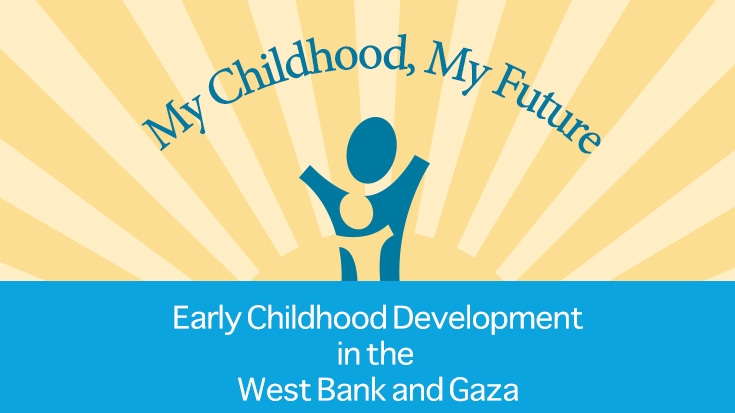The status of Early Childhood Development (ECD) in West Bank and Gaza
- Neonatal mortality and infant mortality have increased slightly in recent years.
- Prenatal and skilled delivery care are nearly universal.
- Stunting remains a persistent problem, with 12% of children stunted.
- Children’s access to iodized salt (an important micronutrient for cognitive development) is high in West Bank and Gaza compared to the region as a whole.
- Only a third of children (34%) are in Early Childhood Care and Education, and only 47% engage in childhood development activities. The rate of violent discipline of children is high at 96%.
Figure 1. Early childhood development indicators for West Bank and Gaza (%)
Source: Authors’ calculations based on PFHS 2006
Children in West Bank and Gaza have unequal opportunities of healthy development, based on factors beyond their control.
There are substantial differences in the opportunities children have of healthy development and accumulating human capital. Early childhood is when cycles of poverty and inequality are transmitted across generations. Children tend to be consistently advantaged or disadvantaged across a variety of different dimensions of ECD, and can face very different life chances based on just a few family background characteristics. If we observe a child who lives in in the poorest 20% of households, with uneducated parents (a “least advantaged” child), and compare that child to one with parents with higher education, from the richest 20% of households (a “most advantaged” child), we find they have very different chances of healthy ECD. Figure 2 presents the chances of different ECD indicators for these “least advantaged” and “most advantaged” individuals.
Models for neonatal mortality, infant mortality, and access to iodized salt show that family background characteristics were not statistically significant in terms of explaining the opportunities for these aspects of early childhood development. This indicates that children in the West Bank and Gaza do not face unequal chances of either an early death or of having iodized salt based on their family background. For all other indicators, though, the least advantaged child faces poorer ECD indicators.
Comparing the least and most advantaged, the gap in prenatal care is 15 percentage points, and the gap in skilled delivery care is 5 percentage points. In terms of nutrition, the least advantaged child is three times as likely to be stunted—a 17% chance against 6% for the most advantaged child. There is a 26 percentage point gap in the probability of engaging in at least four childhood development activities. The largest relative difference is in ECCE attendance, where the least advantaged child has a 13% chance of attending ECCE, and the most advantaged child a 58% chance. The least advantaged child is almost as likely to be violently disciplined, with less than a percentage point difference between least and most advantaged child in this respect.
Figure 2. Inequality in the chances for healthy early childhood development (%)
Source: Authors’ simulations of chances for a “most advantaged” and a “least advantaged” child based on calculations using PFHS 2006.


